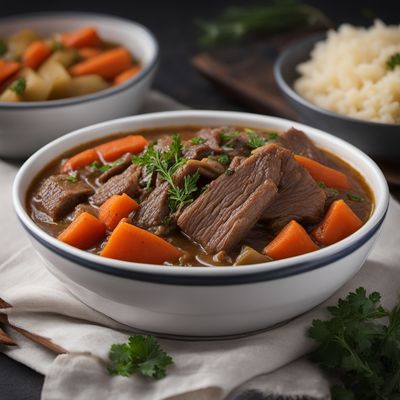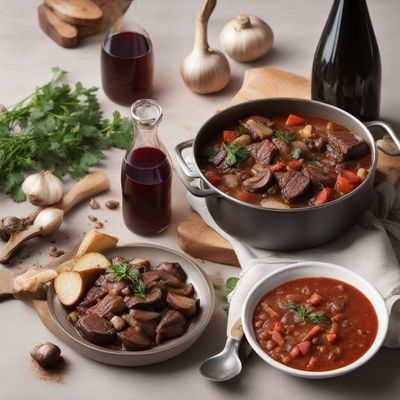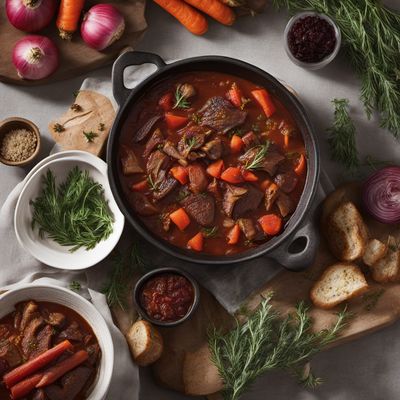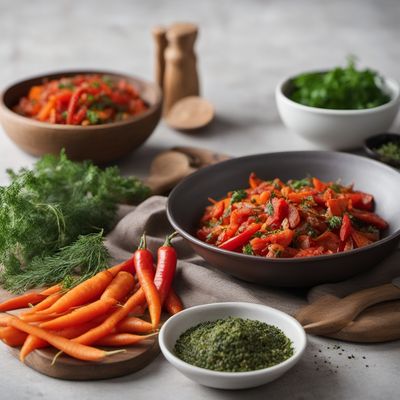
Ingredient
Turnips
Roots of Versatility: Unleashing the Culinary Potential of Turnips
Turnips are round or oval-shaped root vegetables with a bulbous white or cream-colored base and a purplish or reddish top. The flesh of the turnip is firm, crisp, and slightly sweet, with a mild earthy flavor. The skin of the turnip is thin and can be eaten, although it is often peeled to reveal the tender flesh underneath. When cooked, turnips develop a soft and creamy texture, making them a versatile ingredient in both cooked and raw preparations.
Origins and history
Turnips have a long history and are believed to have originated in Central Asia. They have been cultivated for thousands of years and were a staple food in ancient civilizations such as the Greeks and Romans. Turnips were introduced to Europe during the Middle Ages and quickly became a popular vegetable due to their hardiness and ability to grow in various climates. Today, turnips are cultivated worldwide and are particularly popular in European and Asian cuisines.
Nutritional information
Turnips are low in calories and a good source of dietary fiber, vitamin C, and potassium. They also contain small amounts of other essential vitamins and minerals, including folate and calcium. With their high water content, turnips can help promote hydration and contribute to a feeling of fullness when consumed as part of a balanced diet.
Allergens
There are no known allergens associated with turnips.
How to select
When selecting turnips, look for ones that are firm and heavy for their size, indicating freshness. The skin should be smooth and free from blemishes or soft spots. Smaller turnips tend to be sweeter and more tender, while larger turnips may have a stronger flavor and a slightly woody texture. Additionally, choose turnips with vibrant greens attached, as these can be used in cooking or as an indicator of freshness. Avoid turnips with wilted or yellowing greens, as this may indicate age or poor quality.
Storage recommendations
Turnips should be stored in a cool, dark place such as a root cellar or refrigerator to maintain their freshness and quality. Remove the greens from the turnips before storage, as they can draw moisture from the root and cause wilting. Store turnips in a perforated plastic bag or a container with ventilation to prevent excess moisture buildup. Properly stored turnips can last for several weeks. Before using, rinse the turnips under cool water and scrub gently to remove any dirt or debris. Peel or trim as needed before incorporating them into recipes.
How to produce
Turnips can be easily grown in home gardens or containers, making them an accessible option for amateur gardeners. They thrive in cool weather and can be planted in early spring or late summer for a fall harvest. Turnip seeds should be sown directly into well-prepared soil, spaced according to the specific variety's recommendations. Regular watering and proper thinning of seedlings are essential for healthy growth. Harvest turnips when they reach the desired size, typically around 2 to 3 inches in diameter.
Preparation tips
Turnips can be prepared in numerous ways, depending on personal preference and the desired outcome. They can be roasted, boiled, steamed, sautéed, or even enjoyed raw in salads or slaws. When cooked, turnips develop a soft and creamy texture, making them a great addition to soups, stews, and mashes. For a unique twist, try pickling turnips to add a tangy and crunchy element to sandwiches or salads. The greens of turnips are also edible and can be used in cooking, similar to other leafy greens like spinach or kale. Experiment with different cooking techniques and flavor combinations to discover your favorite way to enjoy turnips.
Culinary uses
Turnips are a versatile ingredient that can be used in a variety of culinary applications. They are commonly used in soups, stews, and casseroles, where they add depth and flavor to the dish. Turnips can also be roasted or sautéed to bring out their natural sweetness and caramelization. In addition, turnips can be grated or thinly sliced to add a crisp and refreshing element to salads or slaws. In some cuisines, turnips are fermented or pickled to create tangy and crunchy condiments. The greens of turnips can be cooked and used as a nutritious side dish or incorporated into stir-fries and pasta dishes.
Availability
Turnips are widely available in grocery stores, supermarkets, and farmers markets, particularly during the fall and winter months when they are in season. They are cultivated in various regions around the world, including Europe, North America, and Asia. However, their availability may vary depending on local growing seasons and consumer demand.
More ingredients from this category
Recipes using Turnips » Browse all

Irish-style Braised Beef Tripe
Savory and Tender Irish Beef Tripe Stew

Cambodian-Style Turnip Cake
Savory Delight: Cambodian-Style Turnip Cake

New Nordic Samosa
Nordic Twist on Indian Samosa: A Fusion of Flavors

Sopa de Pollo y Fideos (Chicken and Noodle Soup) Adapted for Latvian Cuisine
Latvian-style Chicken and Noodle Soup: A Hearty Delight for Chilly Days

Belarusian-style Boiled Meat
Hearty Belarusian Boiled Meat: A Comforting Delight

Sopa de Pollo y Fideos - New Nordic Style
Nordic-Inspired Chicken and Noodle Soup

Beef Bourguignon
Savory French Beef Stew: A Taste of Tradition

Tajik Beef Stew
Hearty Tajik Beef Stew: A Taste of Warmth and Comfort

Occitan-style Venison Stew
Savory Occitan Venison Delight

Swedish-style Ajapsandali with Root Vegetables
Hearty Swedish Vegetable Stew with a Georgian Twist

Swedish Meat Soup
Hearty Nordic Delight: Swedish Meat Soup

Hungarian-style Beef Pho
Magyar Magic: Hearty Hungarian Beef Pho
